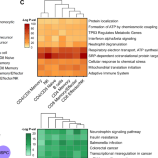
Articles
-
Feb 5, 2025 |
nature.com | K. Bassil |M. L. Perreault |A. L. Svalastog |J. G. Bjaalie |M. R. Velarde |T. R. Gregory | +5 more
The integration of Indigenous perspectives and knowledge with biomedical approaches in neurosciences can significantly broaden the understanding of the human brain and mind. Drawing upon the writings of Elders in Canada, we refer to this integration as Two-Eyed Seeing or Etuaptmumk. We discuss how Two-Eyed Seeing and other dual perspectives can bring both breadth of knowledge and humility to the development of research and clinical practices for brain health. In this forward-looking discussion, we include both traditional academic and non-academic traditions and the work of Indigenous scholars on methodologies, life, health, culture, language and history. To describe challenges and consider solutions, we offer broad strategies for allyship, humility and universalism and situate them in four specific examples pertaining to disability, suicide, migration and the environment. We further advance the power of Two-Eyed Seeing in the context of new considerations for communication and public engagement. Two-Eyed Seeing, per se, is only one approach, but as neuroscience becomes ever more global, inclusive and ethically proactive, it must universally see the world of brain and mental health through the eyes of both reductionism and holism. Combining Indigenous insights with neuroscience methods through Two-Eyed Seeing can broaden the understanding of brain function and mental wellbeing by merging reductionist and holistic perspectives across various domains, while promoting allyship, humility and inclusive communication.
-
Aug 6, 2024 |
nature.com | K. G. Suresh |B. N. Kumar |Mohit Bajaj |E. Parimalasundar |Milkias Berhanu Tuka |Arvind R. Singh
This research paper introduces an avant-garde poly-input DC–DC converter (PIDC) meticulously engineered for cutting-edge energy storage and electric vehicle (EV) applications. The pioneering converter synergizes two primary power sources—solar energy and fuel cells—with an auxiliary backup source, an energy storage device battery (ESDB). The PIDC showcases a remarkable enhancement in conversion efficiency, achieving up to 96% compared to the conventional 85–90% efficiency of traditional converters. This substantial improvement is attained through an advanced control strategy, rigorously validated via MATLAB/Simulink simulations and real-time experimentation on a 100 W test bench model. Simulation results reveal that the PIDC sustains stable operation and superior efficiency across diverse load conditions, with a peak efficiency of 96% when the ESDB is disengaged and an efficiency spectrum of 91–95% during battery charging and discharging phases. Additionally, the integration of solar power curtails dependence on fuel cells by up to 40%, thereby augmenting overall system efficiency and sustainability. The PIDC’s adaptability and enhanced performance render it highly suitable for a wide array of applications, including poly-input DC–DC conversion, energy storage management, and EV power systems. This innovative paradigm in power conversion and management is poised to significantly elevate the efficiency and reliability of energy storage and utilization in contemporary electric vehicles and renewable energy infrastructures.
Try JournoFinder For Free
Search and contact over 1M+ journalist profiles, browse 100M+ articles, and unlock powerful PR tools.
Start Your 7-Day Free Trial →